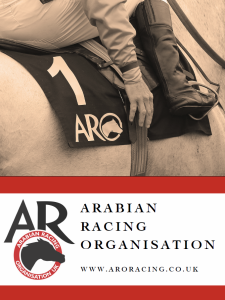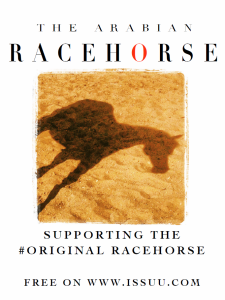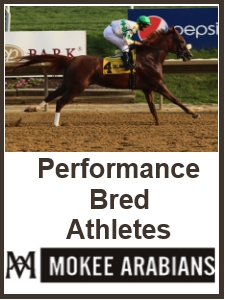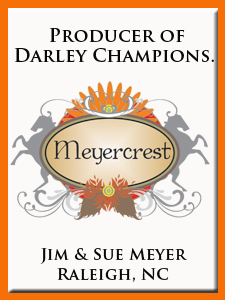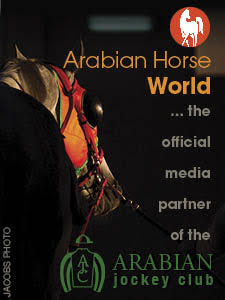Types of Races
Click to Open the Types of Races
Allowance
A race in which the eligibility and the weight a horse carries is based on the amount of money or the number of races the horse has won. A basic weight is assigned for all eligible horses with “allowances” (less weight) in weight for horses with the poorer records. These allowances are given to provide a more competitive race.
Claiming
Horse entered into this type of race may be purchased (claimed) at a stated price by a licensed owner or trainer. The purpose is to provide competition among like quality and value of horses. Any money won goes to the former owner, and the new owner must take the horse following the race. Entering a horse in a claiming race with too high a price offers little chance of earning a share of the purse.
Derby
A stakes race for 4-year olds.
Distaff
A race exclusively for female horses.
Futurity
A stakes race for 3-year olds where owners often begin the nomination process when the horses are very young.
Handicap
A race in which the racing secretary or track handicapper assigns weights to theoretically equalize the winning chances of all entrants.
Maiden
A race for horses that have never won a race, although if a maiden horse is disqualified after finishing first, it is still considered a maiden. This classification of race may have conditions set to it such as claiming price, allowances or restrictions such as filly and mare or age. It is usually the first type of race into which a horse is entered.
Oaks
A stakes race for 4-year old fillies.
Open Race
A race with lenient eligibility conditions permitting entry of a wide variety of horses regardless of sex, place of birth, or previous number of victories. Invariably a race of higher class than one that is more restricted.
Overnight Race
This term is used for any race which closes at regular entry time (48 hours before the race), does not require earlier nominations, or entry fees. The term originally meant that these races were put into daily program form one day for running the next (or overnight)
Stakes
Short for sweepstakes. A race in which owners pay a fee to nominate, enter and run their horses. To attract the best possible eligible runners by increasing the total purse, “added money” is put up by the track racing association or sponsor. Nominations are usually taken months in advance of the race and entries close at least 72 hours before the running of the race.
Starter Allowance
An allowance race for horses that have raced in a claiming race sometime in their racing careers.
Weight for Age
A race where horses carry set weights based upon age, and the older horses carry more weight.
Racetrack Personnel and Officials
Click to Open Racetrack Personnel and Official terms
Bloodstock Agent
A person who, for a fee or commission, acts as an agent for the sale or purchase of a racehorse.
Bookkeeper
The horsemen’s bookkeeper provides accounting for individual ledgers for each owner, trainer, jockey and others. Subject to audit by the Racing Commission at all times, these accounts must contain sufficient funds to cover all moneys due horsemen: purses, jockey fees, stakes payments, rewards, claims and deposits.
Breed Representative
An employee of a breed organization who represents their horsemen and others at a race meet.
Clerk of Scales
This person has the responsibility of supervising the jockeys during the race program. He weighs the riders and tack before and after a race. Included in the weight of the rider are: silks, pants, boots, saddle and pad. Not weighted are: helmet and cap, blinkers, whip and bridle.
Clockers
Required to be at the track during training hours to time the horses in their workouts. These records are submitted to the racing office.
Entry Clerks
On duty at the racing office in the mornings when entries are being taken. Entry slips are then checked for corrections.
Film Patrol
Furnishes the placing judges and stewards with video tapes of the race. The stewards immediately review the tapes after the race to determine if the race was run free from infractions. The public is able to view the replays on closed circuit television monitors after the race is declared official.
Identifier
Before a race, the track identifier must check the tattoo and compare it with the number from the horse’s ID supplement or racing certificate to make sure the correct horse is being raced.
Outrider
Employed by the track to prevent horses from acting up, running away, or getting out of control before, during, or after a race.
Paddock Judge
In charge of the paddock and saddling before each race. All trainers, owners, grooms and jockeys are under the judge’s jurisdiction while in the paddock area. A record is kept of the equipment used on each horse. Changes must be reported to the stewards. The time schedule is a priority for the paddock judge. Horses must reach the paddock on time; the jockeys are told when to mount; and the horses should enter the track at the proper time for the post parade.
Patrol Judges
They are equipped with communication devices relaying information to the stewards. Have been practically eliminated at some smaller tracks who rely on the film patrol to detect infractions.
Placing Judge
A racing official responsible for determining the correct order of the finish of the race.
Racing Commission
A body of people appointed by the state’s governor which governs and polices racing in that state.
Racing Secretary
Generally oversees the races at the track. The first objective before the meet begins is to compile the condition book, which describes the future races of each day of the meet and is issued in advance of the meet. Conditions are written suited to the available horses, which cover a wide enough range in class of races to accommodate all ready horses. Ideally, there are enough different types of races so that each horse on the premises has a fair chance to run and win at least once every 14 days. In addition, the racing secretary assigns weights to entrants in handicap races, submits complete information on entries for each day’s racing to the printer for the official program after entries have been closed, and screens stall applications to determine which horses are acceptable for competition at the track.
Starter
Has charge of the horses from the time they leave the paddock until the actual start of the race. The gatemen help the horses in the starting gate. All horses must be in the correct gate, securely in place and therefore get a fair start when the gate is unlocked to start the race.
Stewards
Racing officials charged with the duty of making sure races are carried out in conformance with rules set down by the state’s racing commission. They share responsibility for the day-to-day governing of a race meet.
Valet
A person who cares for a jockey’s clothing and carries the tack.
Veterinarian
Track official which is responsible for checking the horses prior to the running of each race to make sure all horses are physically able to compete. This may occur anytime from stable to paddock. Has the authority to scratch any horse up until post time if any physical problems are detected.
Wagering
Click to Open Wagering Terms
Across the Board
These bets are represented by combination tickets, the most common being a ticket for $6, a $2 bet on each win, place and show.
Added Money
The money added by the track management to the amount already supplied through fees and other means.
Box
To bet on two horses to come in first and second in either order.
Conventional (mutuel) Pool
The total amount of money bet on a race for win, place, and show.
Coupled
When two or more horses are entered in a race by one owner, they are coupled together in the wagering as an entry. A bet on one horse of an entry is a bet on the others as well.
Daily Double
Two races are designated in the daily program on which a bettor may select a horse for each race to win and receive one ticket. Both horses must win before the bettor can collect.
Entry
Two or more horses which are coupled in a race (1, 1a, 1b) are a single betting unit; a bet on one being a bet on them all.
Exacta
This bet is on two horses in the same race to finish first and second in that order.
Exotic Pools
Wagering pools other than the conventional win, place and show pools. Examples: daily double, exacta, trifecta, pick-six.
Field
This word has two meanings in racing. The entire group of starters in a race are known collectively as the field. In addition, a field horse is one of a group designated by the racing secretary in a case where there are more starters than there are betting units provided by the pari-mutuel equipment. If you bet on a field horse, you get all of the field horses, similar to a coupled entry.
Fractional Time
The running time of the lead horse at various points between the start and the finish of a race.
Form
A horse’s past performance (a detailed record of a horse’s previous races) indicating his ability.
Handle
Term used by race tracks to designate the volume of moneys wagered.
Hit the Board
Those horses whose numbers appear on the tote board as first, second, third, and fourth. The first three finishers affect wagering payoffs.
Long Shot
A horse paying good odds (10 to 1 or better).
Minus Pool
When an entry is so heavily wagered on that, after deductions, not enough money remains in the pool to pay off the legally prescribed minimum.
Morning Line
These are probable odds on each horse as calculated by a track handicapper and are printed in the program and posted on the tote board prior to the betting.
Off Track Betting (OTB)
Legal wagering at a location other than the track where the races are being held. Must conform to the rules and regulations of the states involved.
Out of the Money
A losing horse that fails to earn any part of the purse; in betting, failure to finish third or better.
Pace
The speed at which the race is run, either slow or fast. A horse “off pace” is running far behind the leaders throughout most of the race.
Pari-mutuels
Invented in Paris by Pierre Oller, under a system which he called ‘mutual wagers’ (or in French, parimutuels), everyone was paid off at final odds, which were determined by the ratio between the amount bet on the winning horse and the amount bet on all the losers. Winning bettors are paid in proportion to the sums they have wagered.
Pick-six
A wager where the winners of six races in a row are selected.
Place
A wager where the horse can finish first or second, and the bettor collects money for the horse finishing second.
Quinella
A wager where two horses are selected to finish first and second in any order.
Show
A wager where a horse can finish first, second, or third, and the bettor will collect money paid for finishing third.
Simulcast Wagering
From the track where a race is run, the race is broadcast simultaneously to other locations where parimutuel wagering is permitted.
Trifecta
A wager where the bettor selects the horses that finish first, second, and third in the same race in exact order.
Tote Board
Directly across the home stretch from the grandstand, the tote board displays the betting totals and revised odds until post-time. It also shows the time of day and the number of minutes remaining until the start of the race. During the race it shows the times in which early stages of the running are clocked and the first four runners.
Win
If a horse is bet to win, it must finish first for the bettor to collect.
Track Terminology
Click to Open the Track Terminology
Also Eligible
When more horses are entered in a race than can be accommodated by the size of the track (i.e., 8, 10, or 12 horse starting gate) normally four also eligible horses are drawn and may move into the starting field in the event of a scratch or withdrawal. The other horses are excluded and are placed on a preferred list for future races.
Also Ran
A horse that does not finish among the first three.
Apprentice Allowance
A weight concession granted a horse ridden by an apprentice rider, usually five to ten pounds, and is commonly denoted by an asterisk beside the weight the horse is to carry or with the jockey’s name.
Association
A body of persons associated with the common purpose of managing a race meeting. These business organizations determine the quality of racing and entertainment through the standards provided by their facilities, competition of the race program, and promotion.
Back Stretch
The straightaway on the far side of the racetrack. Also used as a reference to the stable area.
Backside
Refers to the stabling area
Bandages
Bandages, or cloth wrappings on a horse’s legs do not necessarily denote lameness or infirmity. Many trainers keep their horses in bandages at all times for protection. They are also used in racing for protection and support.
Bleeder
Horse that bleeds from the lungs during heavy exertion, usually from ruptured blood vessels.
Blinkers
Eye pieces that limit a horse’s vision and sometimes help him concentrate on running.
Blow Out
A brief, fast workout (usually three or four furlongs) given a day or two prior to a race and designed to sharpen or maintain a horse’s condition.
Bug Rider
Apprentice jockey; an asterisk is used by newspapers to identify an apprentice in entry lists.
Bull Ring
A small race track with sharp turns.
Bute
Abbreviation for phenylbutazone which is an anti-inflammatory pain medication.
Chart
The report of a race giving positions of all horses at various places during the race. Also includes other information such as odds, handle, time and comments.
Chute
Extension of the racetrack to permit long, straight runs before a turn.
Clubhouse Turn
The turn to the right of the grandstand, so called because the clubhouse is usually to the right of the general stands.
Colors
The jockey’s jacket and cap provided by the owner or training stable. These distinctive colors are registered with the state racing authority and/or at the racetrack office.
Condition Book
A booklet issued periodically by the racing secretary describing future races so that trainers can plan in which races to enter their horses.
Conditions
The rules for the race, as written by the racing secretary, under which the trainer enters the horse. They include terms of eligibility for entry, purse size, and weight concessions.
Dark Day
A day when no live racing is scheduled during a race meeting. Tracks may have one or more dark days per week.
Dead Heat
When at least two horses cross the finish line simultaneously. Disqualify – To lower a horse’s actual finishing position by an official act after deciding it interfered with others during a race.
Draw
After the morning entries close, usually 48 hours before the race, post positions and the filed entry forms are drawn by lot.
Driving
A term used when a horse is running under extreme pressure.
Ease
To spare the horse dangerous exertion by slowing it.
Eighth Pole
The pole used to mark one-eighth of a mile before the finish line.
Enter
Trainers enter horses in a race by filling out entry forms. In addition to vital statistics such as horse’s name, age, sex, trainer, the entry form requires the trainer to list the weight allowances the horse can claim for that race, the claiming price if any, and the jockey that will ride the horse.
Fade
Occurs when a horse tires rapidly during the stretch drive.
Farrier
A blacksmith specializing in the shoeing of horses.
Far Turn
The turn on the racetrack off the backstretch.
Flag
Signal held by an official flagman a few yards in front of the gate where the race actually starts. Timing begins when horses reach that point.
Furlong
One-eighth of a mile.
Handicapping Lengths
1 length = from nose to croup; ½ length = half a horse’s body length; neck (nk) = from nose to withers; head (hd) = from nose to throat latch; nose (no) = muzzle of the horse.
Handily
A term used to describe a horse working or racing with ease and without urging.
Home Stretch
The straightaway on the racetrack leading to the finish line.
Hot Walker
Stable hand or machine which walks a horse while it cools.
Inquiry
Steward’s post-race investigation of possible infractions. Race is not declared official until stewards have studied the film made of the race and have questioned the jockeys involved. If suspicions are confirmed, violators are disqualified and a new order of finish is posted.
Jock Mount
Standard fees paid to a jockey to ride in a race.
Lasix
Common name for furosimide, a diuretic medication given to a horse who is a bleeder in hopes of keeping the horse from bleeding in the lungs during a race.
Lead Weight
Metal carried in the saddle cloth to make up weight assigned.
Length — The distance between a horse’s nose and the base of his tail, an average of eight feet. In time – 1 length = 1/5 second.
Light the Board
The first four finishers in a race as shown on the tote board.
Maiden
Horse which has never won a race. When any horse “breaks its maiden”, it has won its first race.
Morning Glory
A horse that does well during morning practice, but does poorly in actual races.
Mudder
A horse that runs very well on a muddy race track.
Overnight Sheet
After the close of entries and the post positions are completed, the list of entries for every race is typed and copied.
Overweight
The term is used when a horse will carry more weight than the minimum authorized by the set conditions of a race. Unpublished overweights are announced prior to the race.
Pace
The speed of the leaders at each stage of the race.
Paddock
Area of assembly for horses immediately before a race. Horses are saddled and mounted here before proceeding to the track.
Photo Finish
Designed to aid the placing judges in making an accurate and impartial determination of the order of finish.
Pole Colors
At most major tracks, the quarter poles are red and white, the eighth poles are green and white, and the sixteenth poles are black and white.
Post Parade
The period of time used to describe the field of horses going from the paddock to the starting gate. Horses parade in front of the grandstand before each race. The parade has a dual purpose which is to allow patrons at the track to view them and also get the horses warmed-up and ready to run.
Post Position
A horse’s position in the starting gate from the inner rail outward which is decided by a random drawing at the close of entries.
Post Time
The time of day when a race is scheduled to begin.
Preferred List
A list is maintained for entered horses eliminated from starting by a surplus of entries. These horses have precedence in starting in any race of similar distance and conditions in which they are afterwards entered.
Purse
The prize money available in a race. There was a time when the prize money was contained in a purse and hung on a wire which crossed the finish line. The term going “under the wire” thus once had literal meaning.
Quarter Pole
On a one mile track, the pole at the turn into the homestretch (a quarter of a mile before the finish line)
Racing Dates
Specific dates allotted to race tracks by racing commissions charged with granting licenses and monitoring the conduct of these tracks in confirmation with the official rules of racing to their states.
Rank
Full or run, hard to rate.
Rate
To restrain a horse early in a race to maintain specific speeds in accordance with the horse’s ability, conserving its energy for later in the race.
Saddling
Approximately 20 minutes before the race, the horses are taken to the paddock where they are saddled under the supervision of the paddock judge. The saddling is done by the trainer and assistant.
Sex Allowance
A weight concession that is given to female horses in races against males. In all races other than handicaps, or where conditions state otherwise, fillies and mares are allowed weight below the scale of weights in that race.
Schooling Race
Practice races held using actual racing conditions, but in which no wagering is allowed.
Scratch
This is a withdrawal of a horse from a race after the entries have been taken.
Shadow Roll
A thick noseband of sheep’s wool used to prevent a horse from seeing shadows directly in front of him, which may cause him to jump or shy away.
Silks
The jacket and cap worn by a jockey (see also Colors).
Starter’s List
List of horses ruled out of action by an official starter because of chronic misbehavior at the gate, and therefore ineligible for racing until bad habits are corrected.
Stick
A jockey’s whip
Stretch
Straight part of the racecourse between turns.
Subscription
Fees required of owner who enters a horse in a stakes race.
Tag
The price for which a horse can be claimed, or purchased, in a claiming race.
Time
Usually reported in minutes, seconds, and fifths of seconds.
Tongue Tie
A leather or cloth strip used to hold down a horse’s tongue and prevent it from being swallowed during a race.
Track Condition
Refers to the surface of the track. Conditions vary due to rain or other climatic factors. Examples: fast, sloppy, muddy, heavy
Under Wraps
A term used to describe a horse running under restraint.
Washy
A term describing a horse that breaks out into a heavy sweat prior to the race.
Winner’s Circle
An area for taking a photo of the winning horse with owners, trainer, and jockey.
Work Tabs
A list of morning workouts, according to distance and time.





